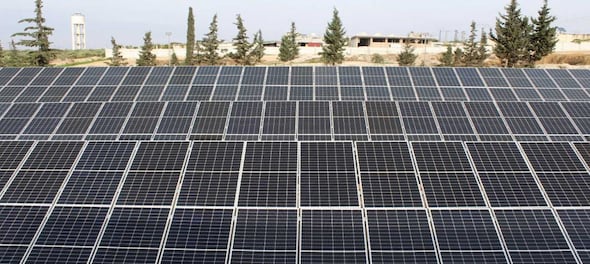
2022 was a landmark year for the Indian solar energy sector. When it comes to renewables, the country is focussing on everything under the sun – production, deployment, and now, waste. The year began with the Union Budget allocating an INR 19,500 crore production-linked incentive (PLI) scheme for domestic manufacturing of high-efficiency solar photovoltaic (PV) modules. And as the year drew to a close, the Ministry of Environment, Forest and Climate Change (MoEFCC) announced electronic waste (E-waste) management rules, bringing the solar PV cells, panels and modules under its ambit, which will come into effect from April 2023. With the announcement of these rules, India becomes the third national jurisdiction globally, after the EU and UK, to have a dedicated regulatory framework to manage solar PV module waste.
The Central Electricity Authority (CEA) now predicts that renewable energy will take over coal by 2026, and solar power is leading the way. India has already commissioned 61 GW of solar capacity, making it the fifth largest in the world. With another 44 GW solar capacity in the pipeline, India will soon reach the top three. But what about the solar waste being generated as well? It is often believed that solar waste only occurs after 25 years of module life. However, various analyses suggest significant module waste quantum generated every year from manufacturing scrap, module damages (transportation, natural events), and early end of life.
Here, we discuss the significance of these rules for the solar sector and how the industry should prepare for it.
What the new solar waste rules mean?
The new E-waste management rules are based on the extended producer responsibility (EPR) framework that mandates solar module producers for responsible waste management of their products. Producers are entities introducing a product in the Indian market via manufacturing and sale, distribution, rebranding, or imports. So, these rules assign waste management responsibility to everyone from solar cell and/or module manufacturers to solar power plant developers who import solar PV modules.
Preparing for collection and storage
The regulation mandates that producers collect and store waste modules until 2034-35 and maintain an inventory on the Central Pollution Control Board portal. This also paves the way for the mandatory recycling of waste solar cells and modules. So, producers should begin developing reverse logistics for their products to bring back the waste modules from consumers and arrange for storage facilities for the waste. Furthermore, in the long run, producers would have to channel this waste for reusing, refurbishing or recycling as per the EPR targets.
Financing waste management
The new solar waste rules come into effect from April 2023, when a significant part of the incoming solar waste will be from India’s existing solar capacity. Most likely, the producers have not accounted for the waste management costs in modules or projects. Furthermore, there is no commercial recycling facility handling solar module waste, so we don’t know the overall waste collection, storage and recycling costs in the Indian context. In the current scenario, producers should identify the financing mechanisms to manage their waste. It also necessitates factoring in the waste management costs in the new solar capacities being planned.
Using hazardous substances in solar cells and modules
The new rules require producers to manufacture and sell modules devoid of hazardous materials such as lead and cadmium or keep the concentrations under the prescribed limits of 0.1 and 0.01 weight percent in the homogeneous form. While some manufacturers offer solar modules devoid of hazardous materials, the market is still dominated by modules with these metals. Hence, the producers should focus on developing new solar cell and module technologies that adhere to these requirements. It will improve the safety of these products and make the solar industry more sustainable.
India’s solar ambition has to involve waste too
With these new electronic waste management rules, MoEFCC has sent out a clear signal to the industry that clean energy expansion in India must happen sustainably. A systematic rollout and implementation of these rules will allow India to achieve a circular solar economy. The solar industry must utilise this time to build infrastructural, technological and financial capacity to manage waste. Recovery of strategic minerals, such as copper, silicon and silver, would help the nation build resilient supply chains and secure India’s solar ambitions.
— The authors, Akanksha Tyagi, is a Programme Associate, and Neeraj Kuldeep, is a Senior Programme Lead, at the Council on Energy, Environment and Water (CEEW), an independent, not-for-profit research institution.
(Edited by : C H Unnikrishnan)
First Published: Dec 31, 2022 11:20 AM IST
Check out our in-depth Market Coverage, Business News & get real-time Stock Market Updates on CNBC-TV18. Also, Watch our channels CNBC-TV18, CNBC Awaaz and CNBC Bajar Live on-the-go!


Delhi Congress chief Arvinder Singh Lovely resigns
Apr 28, 2024 10:54 AM
Lok Sabha polls: Voter turnout in Rajasthan over 62%, down by 4% since 2019
Apr 28, 2024 8:49 AM

